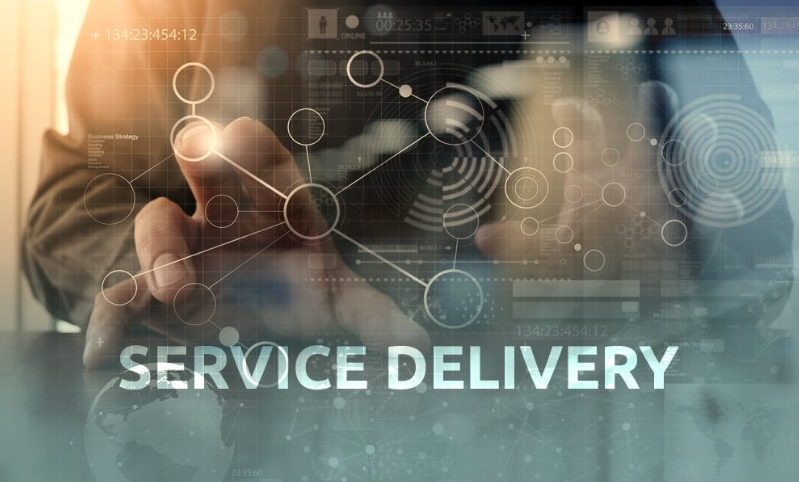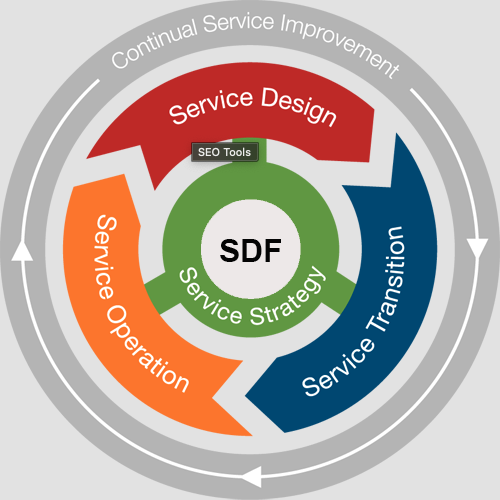
IT Service Delivery (Image by sahaysdailypost)

IT Service Delivery (Image by sahaysdailypost)
IT service delivery is the process through which IT services are provided to users in a consistent, efficient, and high-quality manner.
This concept is vital in today’s digital era, as it directly influences an organization’s operational effectiveness and overall performance.
Meeting the technology needs of the business with precision and foresight is what effective services delivery is all about.
For example, Zomato’s using IT service delivery to manage and optimize their data analytics platform, which is essential for their operations as a food delivery and dining-out company.
This migration was a strategic move to enhance the performance and reduce the costs of their data analytics operations, which are central to their service offering.
To read more about how Zomato’s is improving IT service delivery, just check out the full story on the AWS website.
So, good service delivery means understanding the specific IT requirements of an organization and ensuring that the IT infrastructure is not only robust, but also adaptable to changing business needs.
That’s why we’re going to spend this article talking about delivering IT Service. We hope our article could be your foundation for improving services delivery in your company.
IT service delivery is the continuous process of designing, delivering, and supporting IT services to meet the agreed-upon needs of users and stakeholders.
So, IT service delivery is about delivering the right tech support at the right time, effectively supporting the business’s growth and success.
This includes managing software, maintaining hardware, and making sure tech support is there when needed.
It’s crucial because it keeps the technology up and running and adapts to new business needs.
The impact of effective IT service delivery is far-reaching. You know those seamless experiences that make your customers keep coming back? That’s IT service delivery at work.
And then, there’s the magic of data — guiding your decisions, big and small.
Also, remember every dollar saved on tech troubles? That’s your proactive IT strategy in action.
And, of course, all the groundbreaking ideas that suddenly seem possible? Yep, that’s the power of a robust IT backbone supporting every innovative leap.
You know, IT service delivery might not always be the star of the show, but it’s absolutely crucial, like the spine holding everything together in a successful digital shift.
That’s why IT service delivery need good IT governance framework. Good IT governance directly influences IT service delivery by providing clear guidelines, standards, and policies.
This good IT governance framework will help deliver IT services that are not only effective and reliable, but also aligned with broader business goals and compliance requirements.
You can learn more about IT governance framework in our feature article. This article could be your basic insight to build a good IT governance framework.
In services delivery for IT Department, the process is straightforward but vital. Each step is meticulously planned to verify that IT services align with and support business objectives..
This step in IT service delivery is essentially setting the groundwork for a successful IT project.
You start with a deep dive into understanding the specific problems or goals of the business where technology can make a difference.
This phase isn’t just about the tech team; it involves getting insights and alignment from everyone – business heads, IT experts, and the people who’ll use the technology.
Together, they create a comprehensive plan. This plan, or roadmap, details the scope of the project, timelines, the resources that will be needed, and importantly, how success will be measured.
It’s a crucial step to making sure that the IT services delivered are not only technically sound but also perfectly aligned with the business’s objectives.

After laying the groundwork, this phase involves bringing the right technology into play. It’s about choosing hardware, software, and network solutions that align with the previously identified needs.
The focus is on finding the right fit – tools that not only meet current requirements but also have the flexibility for future growth.
Once the technology is selected, the implementation phase kicks in. This involves setting up and configuring the chosen technologies.
A key aspect here is ensuring that everything is securely integrated into the existing system, making the transition as smooth as possible. It’s not just about making things work; it’s about making them work well together.
But it doesn’t end with just setting up the technology. User training is an integral part of this phase.
This means providing thorough training and support to employees, helping them understand and use the new tools effectively.
The goal is to empower the workforce, ensuring they are comfortable and proficient with the new technology.
This step is essential for maximizing the benefits of the new IT infrastructure and ensuring a high level of user adoption.
Through this phase, the IT service delivery process turns the plans and strategies into tangible, functional technology solutions, laying a strong foundation for improved business operations and efficiency.
This ongoing step define the continuous availability and enhancement of IT services. This phase includes proactive monitoring, where IT teams regularly check the health and performance of systems.
This proactive approach helps in identifying and addressing potential issues before they escalate, maintaining consistent service quality.
Additionally, adapting to change is a key aspect of this phase. IT services must evolve in response to new technological advancements, emerging security threats, and the changing needs of users.
This adaptive approach keeps IT services relevant and secure in a rapidly changing technology landscape.
Furthermore, the phase encompasses continuous improvement. This involves measuring performance metrics and gathering user feedback to refine and optimize IT processes and services.
The goal is to enhance efficiency and user satisfaction, creating a cycle of improvement that keeps IT services at their peak performance.
By focusing on these areas, services delivery remains dynamic, responsive, and effective, providing lasting value to the business.
Keep in mind that when it comes to IT service delivery, you should think of it as a team sport.
You’ll need to work together-business teams and IT professionals must communicate effectively to make things happen.
And hey, it’s a continuous journey. This process is always evolving, adapting to new business needs and tech developments.
Also, don’t skimp on expertise. Investing in skilled IT talent and top-notch tools and processes is essential.
IT service delivery and services management (ITSM) are key players with distinct yet complementary roles.
IT services delivery is the action-oriented aspect. It’s where ideas become reality – turning business needs into practical technology solutions.
It’s focused on delivering, implementing, and maintaining IT services effectively. Activities include project management, deploying technology, managing incidents, training users, and maintaining systems.
On the other hand, IT service management is the strategic force. It involves designing, optimizing, and improving IT services over time, focusing on setting standards, defining processes, measuring performance, and adapting to changes.
Activities here include service design, process improvement, and monitoring user experience.
While service delivery is about creating and maintaining the technology, management is about strategically enhancing it.
They are not rivals but partners, each essential for a thriving digital business environment.
They ensure technology not only functions smoothly but also supports and propels the success of the organization.
In our discussion of IT service delivery, we’ve recognized that IT service delivery is a central element in the digital landscape of the enterprise.
IT service delivery encompasses the effective implementation and maintenance of IT services, ensuring they align with and support business objectives.
Emphasizing the importance of steps like defining the foundation, building infrastructure, and maintaining and optimizing services, IT service delivery is key to driving business efficiency and productivity
Strong IT service delivery not only addresses current needs but also paves the way for future growth and innovation.
So, if you want your business to excel, start improving your IT service delivery processes today as a strategic step toward success.